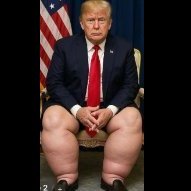USA Trump Tightens the Trade Noose: How Tariff Diplomacy Is Challenging Xi’s Hold on Asia
-
Recently Browsing 0 members
- No registered users viewing this page.
Announcements
-
Topics
-
-
Popular Contributors
-
-
Latest posts...
-
18
There really is nothing new in this world ...
Love Scout mistresses. Woggle and all.- 1
-

-
61
Middle East Israeli Forces Push Gaza Evacuations Amid Tragic Attacks
You are Anti Israeli and part of the movement spreading lies and falsehoods about the situation . I doubt that you even believe the Hamas lies about a genocide , but its a good stick to beat Israel with -
9
Landlord didn't pay maintenance fee, now condo keycard locked
Non payment of CAM fees is a common problem in most condos. From my previous knowledge of being on a condo committee a long time ago, i do not think the condo can do that. We only identified that services like water and electricity could be cut off. I dont think that has changed. At another condo annual meetings in the last few years the subject has been discussed and the commitee was saying that there were limited options for what to do. Mainly cut off services. Eventually take the owner to court, but it takes a very long time. Have you searched the web on this subject? Does the condo state in its rules that they can do this? They may have added a rule if passed by co-owners. Ask the condo what is it that permits them to block access. IMHO, you likely need legal advice. -
18
Report Thai MP Slams VIP Invite for US Reporter Critical of Thailand
Weird story. So he's a spin guy - not an accredited journalist (for any publication? not just White House? Many of the above posts are too harsh. The government invited him then, during due diligence, realized he's a faker, and rescinded the offer to come to Thailand. The Bangkok Post report says it that way - nothing about being turned away at the border or airports. Yes, they should have checked him out first though. So who IS he working for? Is he and his new PR company being subcontracted by some big shady spin firm working for Cambodia (e.g. Hill and Knowlton, or the like)? -
0
Thai - Cambodia Conflict Border Tensions Rise as Thai Govt Faces Crisis
File photo for reference only Thailand finds itself in an increasingly precarious situation as tensions with Cambodia heighten and the government navigates a critical leadership vacuum. The Pheu Thai-led administration is in turmoil, with both the premiership and defence minister roles vacant during a time when decisive action on national security is paramount. Leadership Void Compounds Challenges Prime Minister Paetongtarn Shinawatra's suspension has left Thailand without its leading political figure. This extraordinary measure follows a Constitutional Court ruling prompted by allegations of ethical misconduct relating to a conversation with Cambodian Senate President Hun Sen. As the court prepares to deliver its verdict on 29 August, the absence of clear leadership has created a sense of uncertainty both domestically and on the international stage. Simultaneously, the defence minister role remains unoccupied after a cabinet reshuffle, with Deputy Defence Minister Gen Nattaphon Narkphanit serving as the interim leader. The absence of a full-time defence minister raises questions about Thailand's strategic posture and its ability to proactively manage the ongoing border tensions with Cambodia. Political Intricacies Behind the Defence Vacancy The vacant defence minister position is viewed by many analysts as a consequence of complex political negotiations within the ruling coalition. Rangsit University's Asst Prof Wanwichit Boonprong explains that intricate bargaining over ministerial quotas has prevented the appointment of a permanent figure. The role is currently held under the quota of the United Thai Nation Party, with any move by Pheu Thai to install its choice seen as potentially controversial. Asst Prof Wanwichit describes the role as a "hot potato," largely due to the political sensitivities surrounding national security. Many senior military officers are reportedly hesitant to accept the position, fearing it could jeopardise their careers by aligning them too closely with a government facing significant challenges. There's speculation that Pheu Thai might be reserving the position for a senior military figure who is soon to be eligible following a constitutional cooling-off period set to expire at the end of September. This tactical delay could imply a strategic shift once the legal barriers are lifted; however, apprehensions persist regarding whether such a figure would accept the role amid current tensions between senior military commanders and the government. Communication Breakdowns and Strategic Implications The leadership void has exacerbated communication challenges in the government’s defence strategy. Gen Nattaphon, serving as a temporary leader, lacks the full authority needed to drive substantial decisions. Consequently, acting Prime Minister Phumtham Wechayachai has had to assume responsibilities beyond his typical remit, commenting directly on defence operations, including missile procurement and border security initiatives. This scenario has led to confusion, as multiple governmental bodies, including the Foreign Affairs Ministry, the Army, and the ad hoc Centre for the Thailand-Cambodia Border Situation, release conflicting information. The lack of a coherent communication strategy undermines public confidence and presents difficulties in responding to Cambodian accusations and public concerns. Asst Prof Wanwichit suggests consolidating messaging into a single authoritative channel to ensure clarity and prevent misunderstandings. This would empower government officials to respond swiftly and effectively to emerging threats and diplomatic challenges. Debate Over Policy Amid Rising Tensions The escalating border tensions have reignited a policy debate over whether Thailand should revive its "battlefield-to-marketplace" approach from the late 1980s and early 1990s. This policy sought to transform adversarial relationships into economic partnerships, notably with nations such as Vietnam and Cambodia. Despite its historical success, Asst Prof Wanwichit cautions against adopting a softer stance in the present context, arguing that Cambodia's current actions have shown aggression rather than cooperation. He suggests that extending work permits to Cambodian labourers under these circumstances could be perceived as a sign of weakness, strengthening Phnom Penh's bargaining position. Instead, applying economic pressure by temporarily closing border checkpoints could potentially destabilise Cambodia internally, prompting it to reconsider its actions. Assoc Prof Pichai Rattanadilok Na Phuket of the National Institute of Development Administration highlights the immediate need to address the consequences of the current clashes before pursuing economic cooperation fully. Reopening border checkpoints gradually and resolving ongoing disputes should take precedence. Civil-Military Frictions Reveal Underlying Discontent The vacant defence portfolio is not only a matter of political bargaining but also reflects deeper civil-military tensions. Leaked communications between Ms. Paetongtarn and Hun Sen have hinted at the government's perception of the army, particularly the Second Army Region commander Lt Gen Boonsin Padklang, as politically opposed to Pheu Thai. This longstanding friction complicates any moves towards consensus between the government and the military hierarchy. The strain is evident in operational discrepancies such as disagreements over disbanding or maintaining the ad hoc Centre for the Thailand-Cambodia Border Situation. Additionally, issues such as the donation-led procurement of barbed wire to construct border fences highlight disconnects between military needs and government responsiveness. While the Second Army Region urgently required the materials, the approach taken suggested a lack of government attention to frontline requirements, creating a perception of misalignment. Political-Military Distrust Undermines Cohesion Former Democrat MP Pinit Intarasombat views the absence of a proper defence minister as a manifestation of entrenched distrust between Pheu Thai and the military. He argues that by not appointing a full-time minister, Pheu Thai might be trying to maintain control over the defence domain in a way that has fractured crisis management. For soldiers on the ground, this leadership vacuum raises uncertainty, impacting morale and preparedness. For Mr Pinit, the lack of a defined political superior blurs the lines between political and security risks, potentially increasing the likelihood of renewed clashes. As tensions mount, the patience of frontline soldiers tested by incidents such as landmine explosions and patrol confrontations wears thin. He asserts that only by demonstrating superior power and better preparedness can Thailand deter further Cambodian escalation. The Path Forward: Navigating Negotiations and Finding Common Ground Amidst these challenges, Deputy Secretary-General to the Prime Minister for Political Affairs, Somkid Chueakong, offers a more tempered perspective. He contends that Gen Nattaphon effectively wields the authority needed to represent the government in negotiations. However, he acknowledges the need for improved communication and faster media engagement to prevent misunderstandings. Despite promising outcomes noted on paper from the Cambodia-Thailand General Border Committee (GBC) negotiations, translating these agreements into action remains a complex challenge. Somkid emphasises the importance of mutual understanding between the two nations, advocating for a neutral mediator to facilitate negotiations. While suggesting that neither the United States nor China would be suitable mediators due to geopolitical alliances and perceptions, Somkid proposes direct military-to-military negotiations, supported by high-level government input, as the best way forward. Ultimately, the Thai government's immediate objectives are clear: stabilise the border situation, restore confidence in its leadership, and align civil-military efforts to ensure a cohesive national security strategy. Effective coordination and transparent negotiation efforts are crucial for peace and stability in the region, while the government seeks to resolve its internal leadership challenges and reinforce its strategic posture. Adapted by ASEAN Now from Bangkok Post 2025-08-18 -
9
Landlord didn't pay maintenance fee, now condo keycard locked
Yes you can and I'm a landlord, rubbish landlords should be penalised, maybe you're one
-
-
Popular in The Pub









Recommended Posts
Create an account or sign in to comment
You need to be a member in order to leave a comment
Create an account
Sign up for a new account in our community. It's easy!
Register a new accountSign in
Already have an account? Sign in here.
Sign In Now